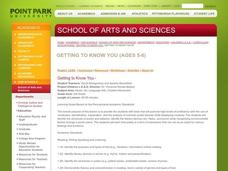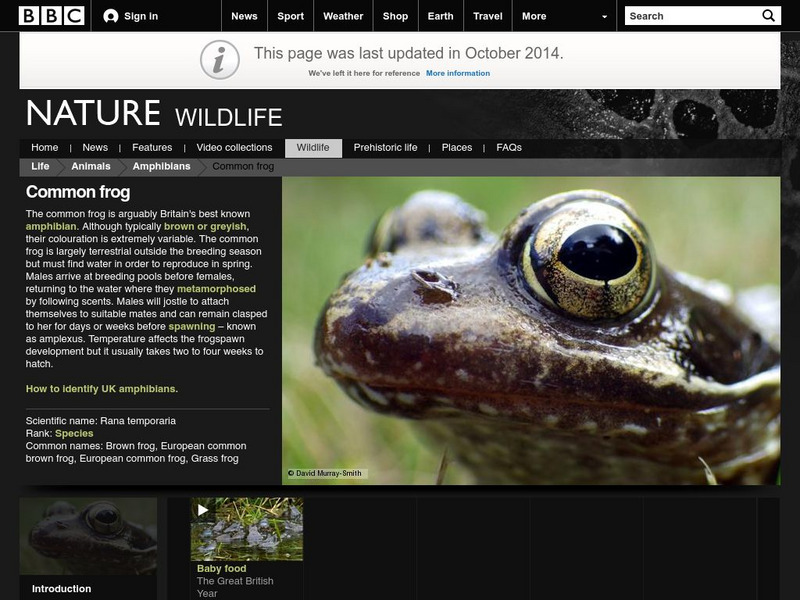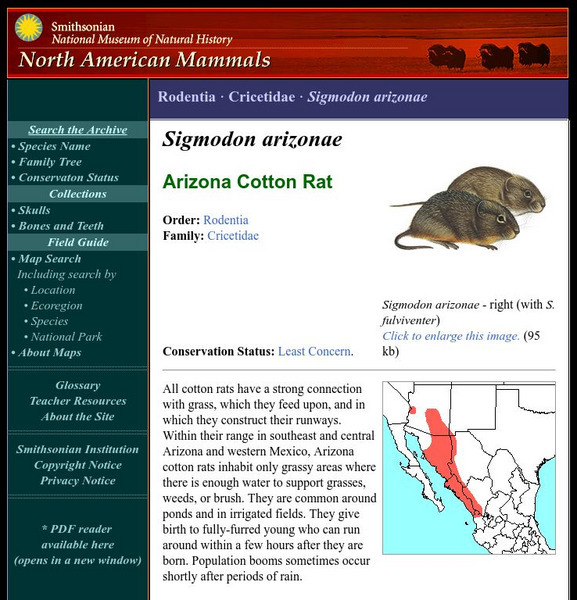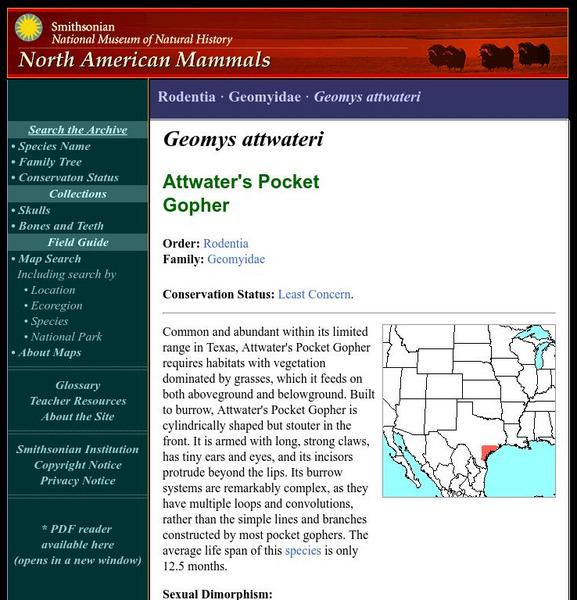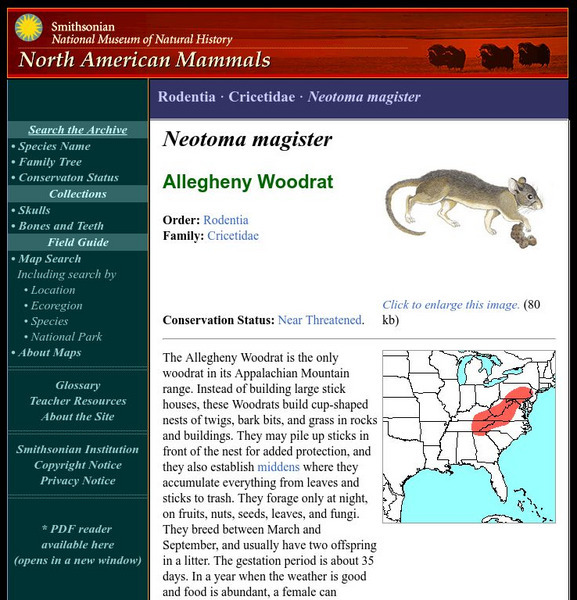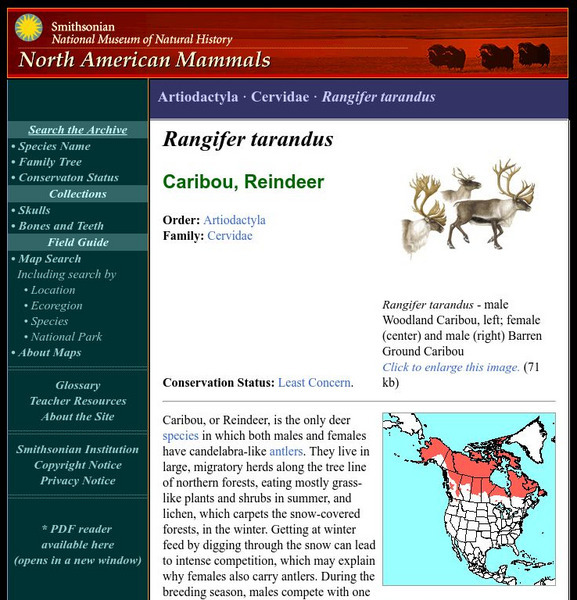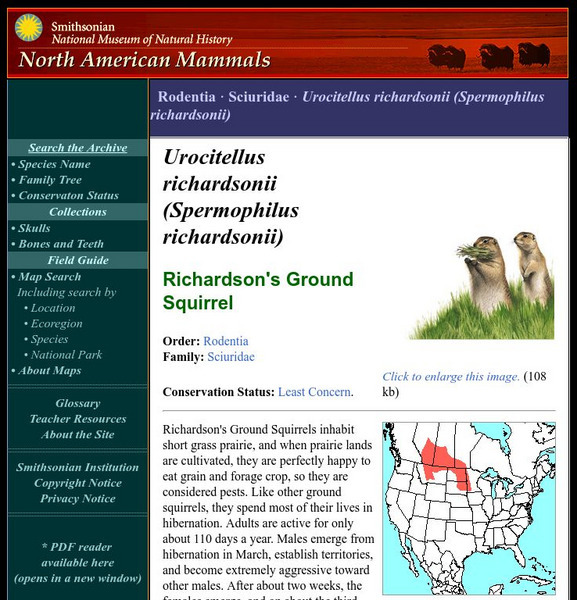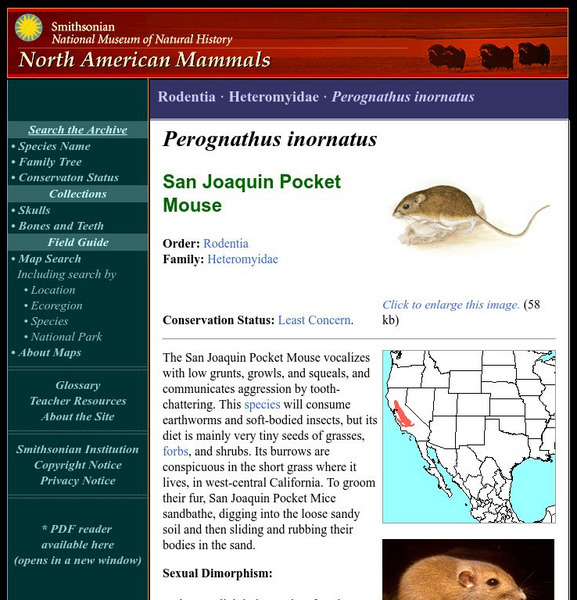Curated OER
Science: Putting Down Roots
Fourth graders, in small groups, observe plants and note their characteristics. After drawing pictures of the plants, including their roots systems, they hypothesize in which environments the plants would best thrive. Finally, 4th...
Curated OER
American Bison
In this bison worksheet, students read several paragraphs about the American Bison. Students learn about its history and its current status and answer questions about the text.
Curated OER
Getting to Know You
Third graders explore different types of poetry and illustrate their own experiences through creating their own poem. In this getting to know you lesson, 3rd graders create and recite their poems with a self-portrait.
Curated OER
The Great Wall of China
In this Great Wall of China activity, students read interesting facts about the wall and answer 3 questions.
Other
Reptiles and Amphibians of the Uk: Grass Snake
The most common species in the UK, the Grass Snake is identified by the Reptiles and Amphibians of the UK website. Detailed description and photos included.
Science Buddies
Science Buddies: Project Ideas: Hidden Grasses and Beans in Processed Foods
In this cooking and food science fair project, determine which common crops are found most often in processed foods. The Science Buddies project ideas are set up consistently beginning with an abstract, objective, and introduction,...
Illustrative Mathematics
Illustrative Mathematics: 5.nf Grass Seedlings
For the sake of this commentary, let R be the height of Rual's seedlings (of course students do not need to use a letter to represent any number in this task). Student must compare the size of each of two products (112xR, and 34xR) to...
BBC
Bbc: Nature: Wildlife: Common Frog
Use this site to learn all about the life of a frog. Read this detailed fact sheet and examine these photos for further information.
National Humanities Center
National Humanities Center: Toolbox Library: Walt Whitman, Triumph of Nationalism: America, 1815 1850
Whitman's poem celebrating the integrity and industry of the masses within a democratic culture.
Smithsonian Institution
National Museum of Natural History: American Mammals: Arizona Cotton Rat
All cotton rats have a strong connection with grass, which they feed upon, and in which they construct their runways. Within their range in southeast and central Arizona and western Mexico, Arizona cotton rats inhabit only grassy areas...
Smithsonian Institution
National Museum of Natural History: American Mammals: White Sided Jackrabbit
The White-sided Jackrabbit strongly prefers level ground to hills, and does not require shrubs for cover, but uses clumps or dense stands of grass instead. Grass also makes up more than 99 percent of its diet. Learn more about the Lepus...
Smithsonian Institution
National Museum of Natural History: American Mammals: Plains Harvest Mouse
Plains Harvest Mice are found in grassy areas, including hay and wheat fields. They seem to prefer shorter grasses, and build round nests of grass on or near the ground. Learn more about the Reithrodontomys montanus, more commonly known...
Smithsonian Institution
National Museum of Natural History: American Mammals: Thirteen Lined Ground Squirrel
Thirteen-lined Ground Squirrels are often seen standing on their hind legs on roadsides or other places where grass is mowed, such as lawns, golf courses, or cemeteries. The squirrels probably once lived in short-grass prairie, and some...
Smithsonian Institution
National Museum of Natural History: American Mammals: Attwater's Pocket Gopher
Common and abundant within its limited range in Texas, Attwater's Pocket Gopher requires habitats with vegetation dominated by grasses, which it feeds on both aboveground and belowground. Built to burrow, Attwater's Pocket Gopher is...
Smithsonian Institution
National Museum of Natural History: American Mammals: Merriam's Pocket Mouse
Merriam's Pocket Mice are found in short-grass prairie, desert scrub, and open, arid brushland. They are most common where the vegetation is dense enough to provide them with seeds and some protection from predators, but not so dense...
Smithsonian Institution
National Museum of Natural History: American Mammals: Vagrant Shrew
Vagrant Shrews live in moist habitats throughout their range. They are common in lakeside or streamside communities of sedges, grasses, and willows, and in coastal salt marshes. Learn more about the Sorex vagrans, more commonly known as...
Smithsonian Institution
National Museum of Natural History: American Mammals: Mexican Ground Squirrel
Mexican Ground Squirrels have adapted well to human activity and are common inhabitants of roadsides, cemeteries, and golf courses. They are omnivores, feeding on the seeds of a variety of grasses and forbs, green plant material, and...
Smithsonian Institution
National Museum of Natural History: American Mammals: Allegheny Woodrat
The Allegheny Woodrat is the only woodrat in its Appalachian Mountain range. Instead of building large stick houses, these Woodrats build cup-shaped nests of twigs, bark bits, and grass in rocks and buildings. Learn more about the...
Smithsonian Institution
National Museum of Natural History: American Mammals: Caribou
Caribou, or Reindeer, is the only deer species in which both males and females have candelabra-like antlers. They live in large, migratory herds along the tree line of northern forests, eating mostly grass-like plants and shrubs in...
Smithsonian Institution
National Museum of Natural History: American Mammals: Richardson's Ground Squirrel
Richardson's Ground Squirrels inhabit short grass prairie, and when prairie lands are cultivated, they are perfectly happy to eat grain and forage crop, so they are considered pests. Like other ground squirrels, they spend most of their...
Smithsonian Institution
National Museum of Natural History: American Mammals: Northern Pygmy Mouse
Northern Pygmy Mice are the smallest rodents in North America. They live in a variety of habitats where there is dense ground cover and eat grass seeds and leaves, prickly pear cactus fruit and stems, mesquite beans, and granjeno berries...
Smithsonian Institution
National Museum of Natural History: American Mammals: Olympic Marmot
Olympic Marmots are highly social, living in groups made up of an adult male, one or more adult females, two-year-olds, yearlings, and young. Their diet consists of grasses and sedges, with flowering plants in season. Learn more about...
Smithsonian Institution
National Museum of Natural History: American Mammals: Southern Plains Woodrat
Southern Plains Woodrats are found in places where grasses, creosotebush, mesquite, and cactus grow. Local populations can reach high levels and then crash. Learn more about the Neotoma micropus, more commonly known as a Southern Plains...
Smithsonian Institution
National Museum of Natural History: American Mammals: San Joaquin Pocket Mouse
The San Joaquin Pocket Mouse vocalizes with low grunts, growls, and squeals, and communicates aggression by tooth-chattering. This species will consume earthworms and soft-bodied insects, but its diet is mainly very tiny seeds of...


